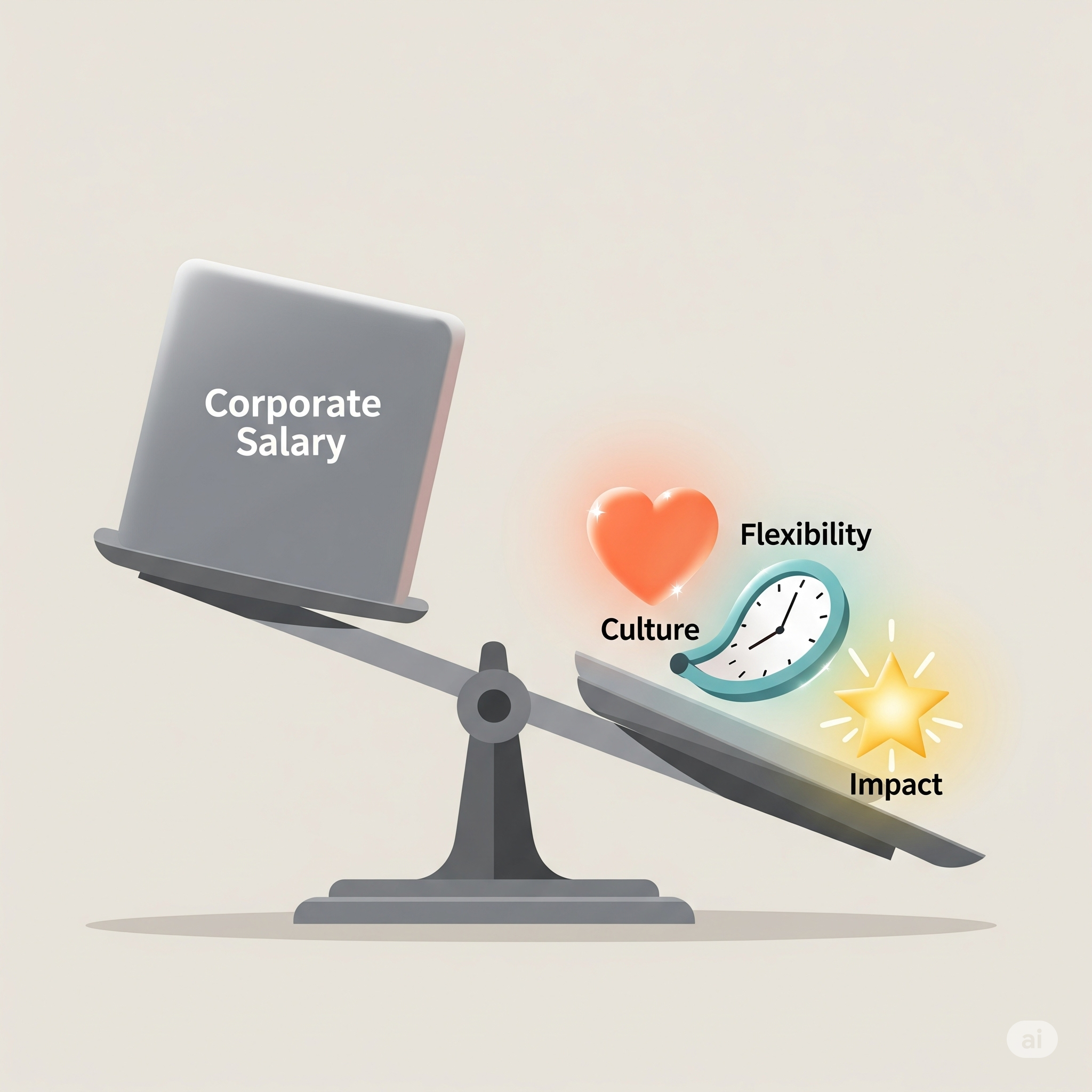Imagine a time, not so long ago, when a single company was like a king in America. Not just any king, but a king that brought everything you could ever want right to your doorstep, no matter if you lived in a bustling city or on a quiet farm far away. This king was Sears.
Picture this: it’s Christmas morning, and a massive, thick book lands on your porch. It’s the Sears catalog, nicknamed the “Big Book.” Inside its pages were treasures – clothes, tools, toys, furniture, even entire houses you could order! Families would circle items, dreaming of what they might get. Later, those dreams came true in giant, bustling Sears stores, where you could buy a refrigerator, get your car fixed, and pick up a new outfit all in one place.
Sears wasn’t just a store; it was a feeling. It was trust. It was convenience. It was a part of nearly every American family’s life for decades. So, how could such a giant, a company that literally helped build the American middle class, fall apart? How does a king lose its crown?
This isn’t just a story about a company. It’s a story about leadership. It’s about the people at the very top, the ones making the big decisions, both smart and mistaken. We’ll imagine ourselves in their shoes, seeing the challenges they faced, the ideas they had, and the signals they might have missed. Because from the very top, when you’re looking out at a vast empire, it’s easy to miss the small cracks forming way down below.
Part 1: Building the Kingdom – The Genius of the Early Leaders
Our story begins in the late 1800s. America was changing fast. More and more people were moving west, settling in small towns, far from big cities and stores. Getting goods was hard. This is where the first set of brilliant leaders, like Richard Sears and Alvah Roebuck, stepped onto the stage.
The Mail-Order Magic (The Catalog Era):
Imagine you’re a farmer in Nebraska in 1890. You need a new plow, a dress for your wife, and medicine for your horse. Where do you go? There’s no Walmart, no Amazon. This was the problem Richard Sears saw. He wasn’t a farmer, he was a smart businessman who started by selling watches by mail. He quickly realized that people in small towns needed everything.
So, he teamed up with Alvah Roebuck, and they started selling a huge variety of goods by mail. This wasn’t just sending a list; they created the Sears catalog. It was thick, filled with drawings and descriptions, and it promised good quality at fair prices.
- Leadership’s Big Idea: They weren’t just selling products; they were selling convenience and trust to people who had very little of either. They understood that the customer didn’t just want a product; they wanted a solution to their isolated lives.
- The Big Gamble: Building this mail-order system was a huge risk. They had to set up warehouses, printing presses, and a way to ship goods across the country. But their vision was clear: reach customers no one else was reaching. They dared to innovate beyond the small local store.
Then came Julius Rosenwald, a true business genius. He joined Sears and became its driving force. He was amazing at making the company run smoothly. He understood numbers, how to buy things cheaply, and how to get them to customers efficiently. He was a master of logistics.
- Leadership’s Touch: Rosenwald made Sears incredibly efficient. He made sure the catalog was accurate, the prices were right, and the products were good quality. He built a system that delivered on the promise. This built incredible trust with customers. People knew if they ordered from Sears, they’d get what they expected.
From Catalog to Store (The Great Pivot):
The early 1900s brought more big changes. America was becoming more urban. People started moving to cities and towns, and cars became common. Now, people could go to stores. So, what did the smart leaders at Sears do? They didn’t cling to their beloved catalog and say, “This is how we’ve always done it!”
Instead, in the 1920s, they made another huge, risky choice: they started building massive department stores. They bought land, hired architects, and built grand, inviting stores, first in cities, then later becoming the anchor stores in new shopping malls.
- Leadership’s Genius: They didn’t just adapt; they transformed. They understood that customer habits were changing. They saw that while the catalog was still good, future growth was in physical stores. This was a bold, costly move, but it positioned Sears for decades of incredible success.
- Creating a Lifestyle: In these stores, Sears wasn’t just selling things; they were selling a way of life. They sold everything from their famous Kenmore appliances and Craftsman tools (which Sears actually owned factories for!) to clothing, tires, and even life insurance (Allstate was started by Sears!).
- A CEO’s Thought: “We were building more than stores; we were building communities. People came to Sears to shop, to fix their car, to get new eyeglasses. We were integrated into every aspect of their lives. Our strategy was to be the single trusted source for everything the American family needed.”
Sears built an empire based on foresight, bold decisions, relentless efficiency, and a deep understanding of its customer’s needs. They weren’t just reacting; they were leading the retail world.
Part 2: The Cracks Begin to Show – The Era of Complacency and Missed Warnings
By the mid-20th century, Sears was a giant. It was the biggest retailer in the world for a long time. But with great success can come a dangerous thing: complacency. When you’re at the top, it’s easy to stop looking over your shoulder.
The Rise of the Discount Wars (A New Kind of Competitor):
Imagine you’re the CEO of Sears in the 1960s or 70s. Your stores are everywhere, your brands like Kenmore are household names. Then, little by little, you start to see new stores pop up: Walmart, Kmart, Target.
- A CEO’s Thought: “These newcomers, they seemed… cheap. They piled goods high, offered less service, and focused on really low prices. We were Sears! We offered quality, service, credit – we were the middle-class dream. We thought our customers would stick with our trusted name, our superior experience. Why would they go to a flimsy discount store?”
- Leadership’s Blind Spot: Sears leaders were perhaps too proud, too focused on their long-held belief in quality and service. They failed to truly understand that a growing number of shoppers were prioritizing price above all else. They didn’t react quickly or strongly enough. They didn’t adopt a competitive pricing strategy or create their own effective discount format. They allowed these new rivals to chip away at their customer base, slowly but surely. It was like a thousand tiny cuts.
The Specialty Store Attack (Being Good at Everything, Best at Nothing):
At the same time, another type of competitor emerged: the specialty retailers. Think Best Buy for electronics, Home Depot for home improvement, Toys R Us for toys, J.C. Penney for clothes.
- A Boardroom Dilemma: “How do we compete with a store that only sells electronics, when we sell everything from car tires to wedding dresses? They have a deeper selection, their staff knows everything about that one thing, and often, their prices are better because they buy in such huge amounts for that specific product.”
- Leadership’s Struggle: Sears had always been “everything for everyone.” This had been their greatest strength. But now, it became a weakness. They were spread too thin, trying to be good at everything but excelling at nothing specific. They struggled to give customers a compelling reason to buy a TV at Sears when Best Buy had a much larger selection and more knowledgeable staff.
Internal Bureaucracy and Slow Thinking:
As Sears grew into a giant, it also became very slow. Like a supertanker trying to turn in a small pond, it took ages to change direction. Decisions that once took days now took months, even years. Layers of management, internal politics, and a fear of making mistakes started to slow everything down.
- A Manager’s Frustration (from the inside): “I had a great idea for how we could improve customer service, but it had to go through three committees, then two vice presidents, then the executive board. By the time it got approved, if it ever did, our competitors had already done it twice over.”
- Leadership’s Challenge: The entrepreneurial spirit that built Sears began to fade. The leaders at the very top became disconnected from the daily realities of the stores and the changing wishes of the customers. Innovation got stuck.
Part 3: The Digital Tsunami and the Final Blows – Misguided Strategies and the Fall
Then came the internet. This was the biggest game-changer of all, and for Sears, it proved to be the most devastating.
The Unforgivable Miss: The Internet Opportunity:
This is one of the most painful ironies in Sears’ story. Believe it or not, Sears was actually an early player in the digital world! In the 1980s, they helped create a service called Prodigy, one of the first online services for regular people. They had a peek into the future, a direct line to what the internet could become.
- A CEO’s Missed Vision: “We saw Prodigy as a fun side project, maybe a way to sell some things online eventually. But we didn’t grasp its true power. We thought people would always want to touch and feel appliances, to try on clothes in person. We worried about selling online hurting our store sales too much. We tinkered with online selling instead of fully transforming our business around it.”
- The Tragic Result: While Sears dabbled, a small company called Amazon was building an online empire. They weren’t burdened by thousands of physical stores. They were lean, fast, and focused on convenience and selection online. Sears had the infrastructure, the brands, the customer data, the vast warehouses – all the pieces! But the leadership lacked the vision to truly embrace the digital revolution. This was perhaps the single biggest strategic failure. They prioritized protecting their old way of doing business over seizing the future.
The Merger Mania (A Desperate Gamble):
By the early 2000s, Sears was struggling. Its sales were falling, and its stores looked old and tired compared to brighter, newer competitors. Then came a new leader, Eddie Lampert, an investor who saw value in Sears’ vast real estate holdings. He orchestrated a massive merger between Sears and Kmart, another struggling discount chain.
- Leadership’s Hope: “Our idea was simple: combine these two struggling giants. We’d cut costs, combine operations, and leverage their massive amounts of real estate. We believed there was a way to unlock hidden value, to create a new, leaner powerhouse. It was a financial play, a way to make the numbers work.”
- The Harsh Reality: The merger was largely about money and real estate, not about improving the actual shopping experience. The stores didn’t get better. The product selection didn’t improve. The customer service didn’t magically become amazing. There was no real plan to make people want to shop at Sears or Kmart again. Leadership focused on cost-cutting and selling off assets, rather than reinventing the core retail business. Stores became neglected, gloomy places where customers felt forgotten.
The Erosion of Trust and Identity:
As years passed, the stores continued to decline. Bright, welcoming spaces became dim and cluttered. Customer service, once a hallmark, became unreliable. The famous brands like Kenmore and Craftsman were sold off or licensed out.
- A Shopper’s Sadness: “I used to love Sears. My grandmother bought her first washing machine there. My dad always got his tools there. But now… it’s just sad. The shelves are empty, the staff looks tired. I don’t even know what Sears stands for anymore.”
- Leadership’s Ultimate Failure: They squandered the very loyalty and trust that the early leaders had painstakingly built over decades. They lost touch with what made Sears special. The brand became a confusing mess, neither premium nor truly discount, neither innovative nor reliable. It just faded away, leaving customers no reason to return.
Conclusion: Lessons from the Leadership Chair – A Cautionary Tale for All
Sears’ story is more than just a historical footnote. It’s a powerful, painful lesson for every business leader, every entrepreneur, every manager, whether you’re running a startup out of your garage or guiding a multinational company.
Here are the key takeaways from the “leadership chair” at Sears:
- Adapt or Die: This is the most crucial lesson. When you’re at the top, it’s easy to become complacent. Sears was too slow to react to discounters, too slow to embrace specialty stores, and tragically, too slow to understand the internet. Always be looking forward, not backward. The market changes, technology evolves, and customer habits shift. If you don’t change with them, you will be left behind.
- Customer First, Always: Sears lost sight of its customers. They stopped investing in the shopping experience, in service, in the very things that made people love them. Never take your customers for granted. Their loyalty is earned every single day. Listen to them, understand their changing needs, and make their experience better.
- Embrace Disruption, Don’t Fear It: The internet was a huge disruptor. Sears had a chance to lead, but it feared cannibalizing its existing business. Don’t let what you have stop you from building what you need. Sometimes, you have to disrupt yourself before someone else does.
- Beware the Bureaucracy: As companies get big, they can get slow. Layers of management and endless meetings can kill good ideas and prevent quick action. Leaders must actively fight against corporate inertia. Keep your organization agile, encourage innovation from all levels, and make decisions swiftly.
- Vision is Not Enough, Execution Matters: The Kmart merger had a vision of combining forces. But the execution failed spectacularly because it didn’t address the core retail problems. A great plan is only as good as its execution. Leaders must ensure their strategies are not just clever on paper, but can actually be put into practice effectively.
- Guard Your Brand Identity: Sears was once synonymous with trust and quality. Over time, that identity became muddled and faded. Your brand is your promise to your customer. Nurture it, protect it, and ensure every action your company takes reinforces that promise.
Sears, once the shining retail king, now stands as a powerful, somber monument. It’s a reminder of the dangers of missing fundamental shifts, clinging to outdated models, and a leadership that, for too long, looked backward instead of forward. The ghost of Sears should remind every leader, every entrepreneur, and every business professional to stay hungry, stay humble, look ahead, listen closely, and never, ever assume that past success guarantees future survival. The world keeps turning, and so must your business.



